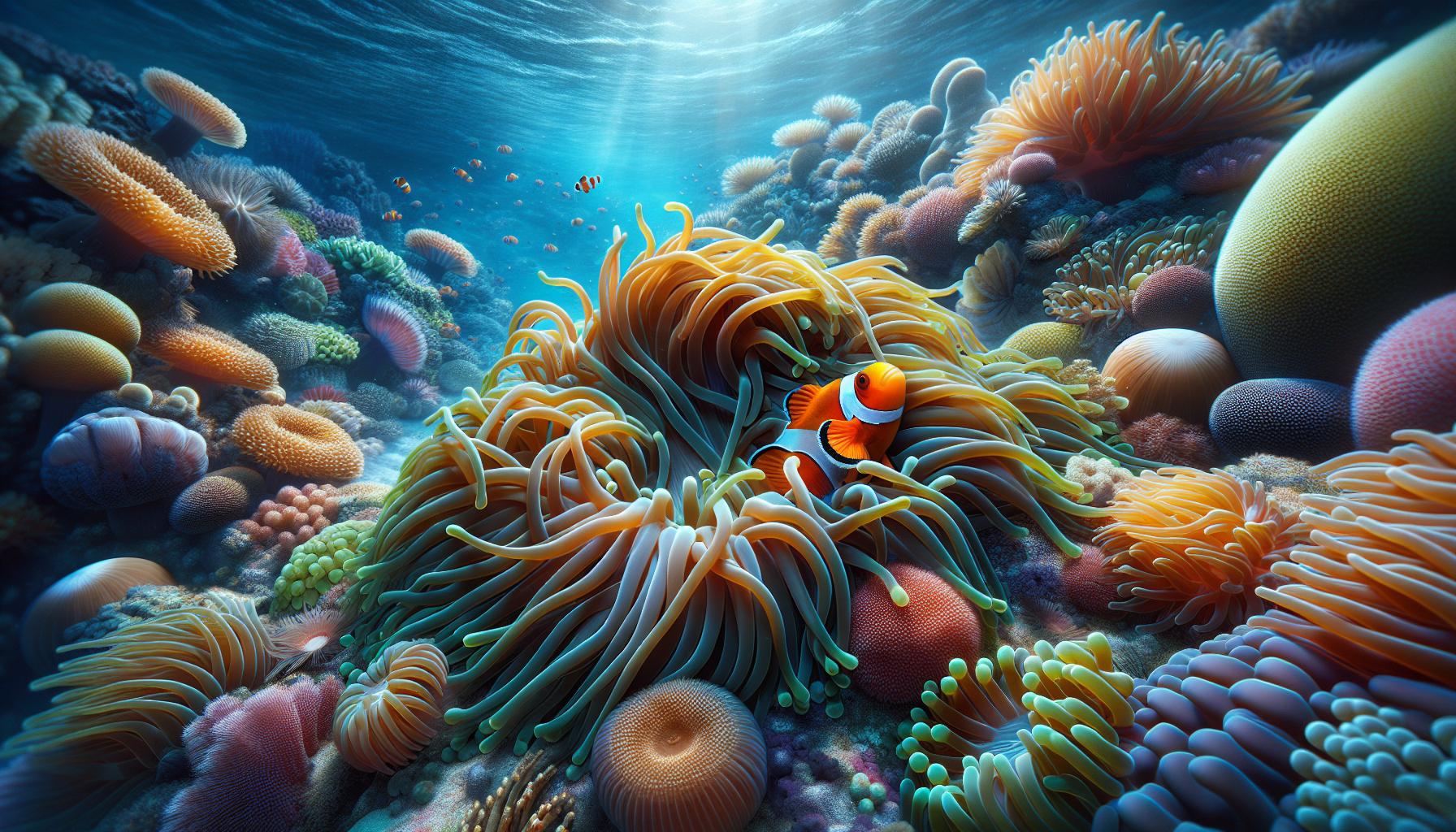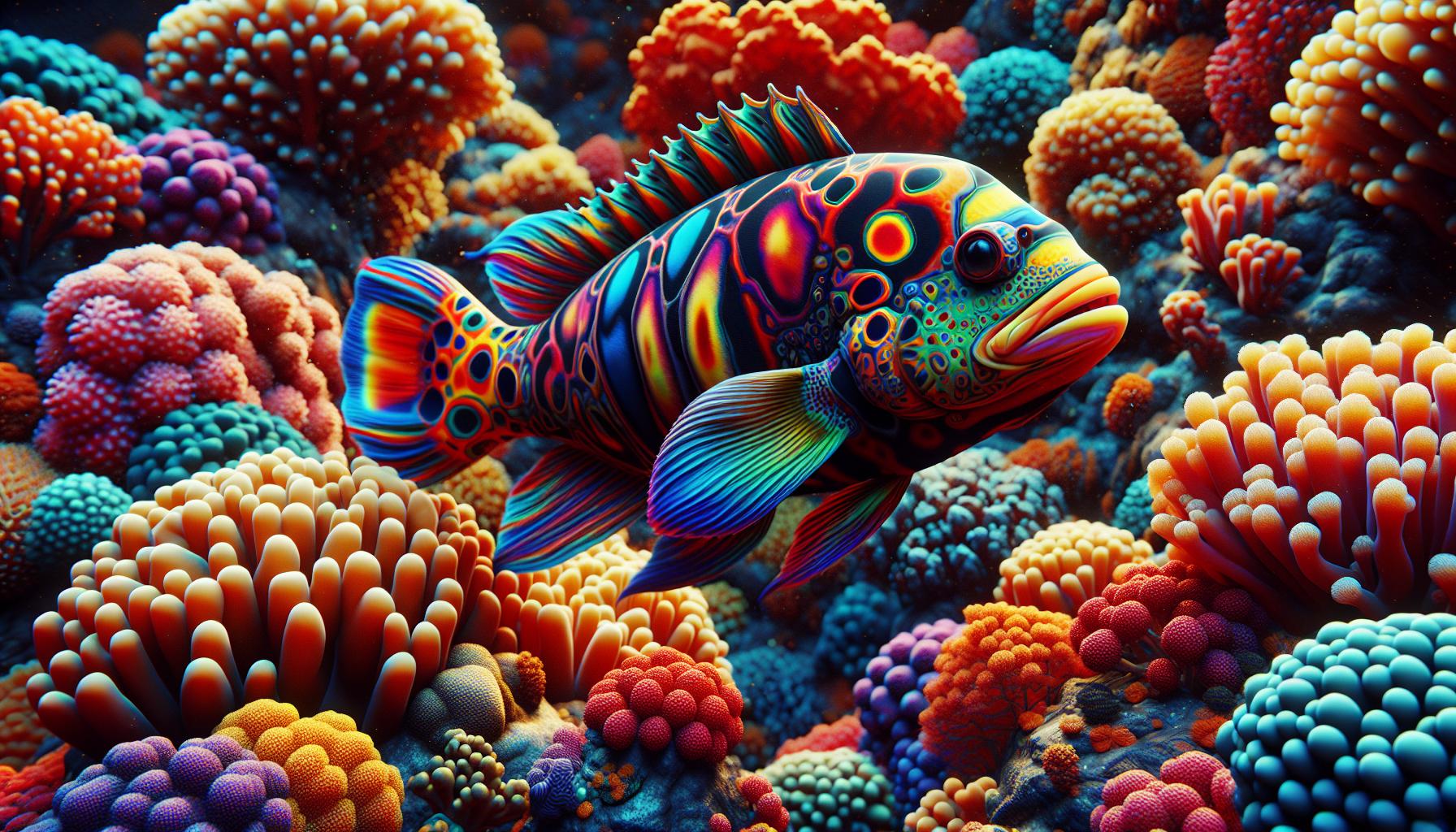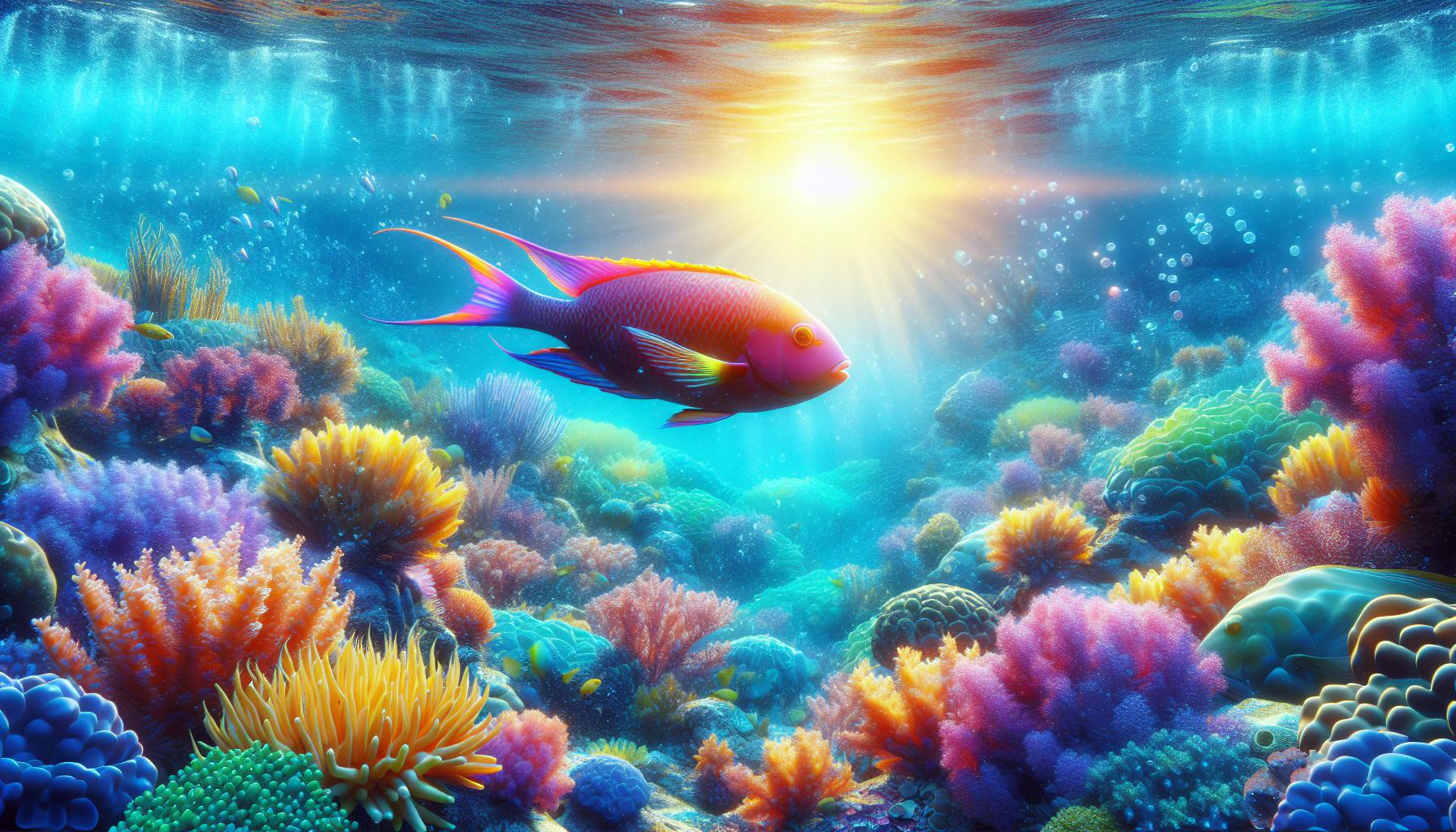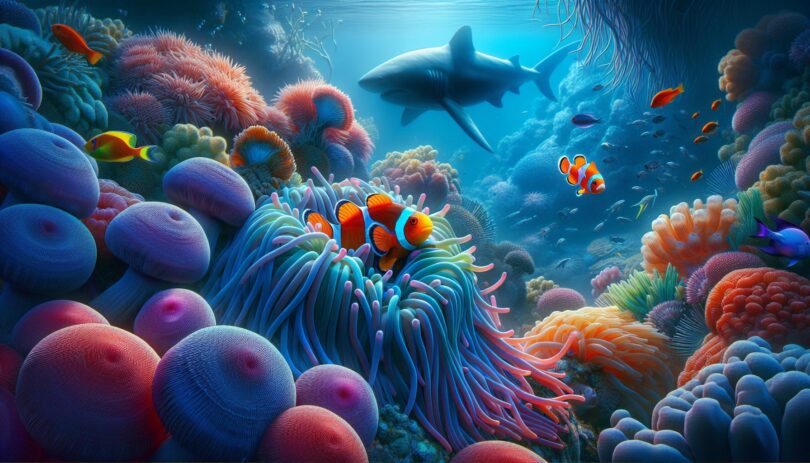Saltwater fish captivate with their vibrant colors and fascinating behaviors, making them a favorite among aquarium enthusiasts and marine biologists alike. From the majestic tangs to the sleek sharks, the diversity within the saltwater realm is truly astounding. I’ve always been mesmerized by their world, a complex ecosystem that thrives beneath the waves.
Diving into this topic, I’ll share insights into the lives of these remarkable creatures. Whether you’re a seasoned aquarist or simply someone who appreciates the beauty of the ocean, there’s something incredibly intriguing about saltwater fish. Their survival strategies, social structures, and environmental importance are just the tip of the iceberg. Join me as we explore the captivating world of saltwater fish.
Key Takeaways
Types of Saltwater Fish

Diving deeper into the vibrant world of saltwater fish, I’ve discovered that their diversity is nothing short of astonishing. From the shallow coral reefs to the mysterious depths of the ocean, every environment boasts its unique inhabitants. I’ll guide you through a few categories that capture the essence of this diversity.
Clownfish
You might recognize these bright orange fish with their white stripes from popular movies. Clownfish are not just famous for their striking colors; they have a unique symbiotic relationship with sea anemones. This partnership allows them to thrive in environments that would otherwise be hostile.
Angelfish
Angelfish are another group that stands out for their elegance and variety of colors. Their distinct shape, with long dorsal and anal fins, makes them a favorite among aquarium enthusiasts. However, it’s their behavior and social structures that I find particularly fascinating. In the wild, they navigate complex coral reefs, displaying behaviors that are a testament to their adaptability.
Sharks
When discussing saltwater fish, it’s impossible not to mention sharks. These apex predators are often misunderstood as they play a crucial role in maintaining the health of marine ecosystems. Sharks vary greatly in size and behavior, from the massive whale shark, which feeds on plankton, to the swift reef shark, navigating tight spaces in coral reefs.
The diversity in the saltwater realm is truly mesmerizing, reflecting the complexity of life beneath the waves. Whether it’s the vibrant colors of a reef fish or the formidable presence of a shark, saltwater fish have adapted in remarkable ways to thrive in their environments. My journey through their world has only deepened my appreciation for these incredible creatures and the vital roles they play in the ocean’s ecosystems.
Colorful Varieties

As I continue exploring the fascinating world of saltwater fish, I’m struck by the incredible array of colors these creatures exhibit. It’s not just about the beauty; these colors serve various ecological functions, from camouflage to signaling.
Take the mandarinfish, for instance. Its psychedelic patterns aren’t just for show. They help confuse predators in the vibrant coral reefs it calls home. Similarly, the brightly colored parrotfish uses its hues for social signaling, especially during mating seasons.
The diversity is staggering. Here’s a quick overview:
| Species | Color Patterns | Habitat |
|---|---|---|
| Mandarinfish | Blue-green with orange lines | Coral reefs |
| Parrotfish | Varies; often bright blue or green | Tropical reefs |
| Lionfish | Red, white, and black stripes | Warm ocean waters |
What’s fascinating is how these colors impact their ecosystems. The parrotfish, for instance, plays a crucial role in reef health, not just through its vibrant appearance but also by grazing on algae that could otherwise choke coral reefs.
Exploring these varieties, I’ve found that saltwater fish coloration isn’t just a matter of aesthetics; it’s a complex interplay of biology, ecology, and evolution. The vividness of an angelfish or the stark stripes of a clownfish tell tales of survival, adaptation, and ecological balance. It’s a testament to the intricate dance of life under the sea, where color is both a shield and a signal, a means of survival in the vast, blue world.
As I delve deeper into this topic, I’m consistently amazed at how much there is to learn and appreciate about these creatures. The more I learn, the more I realize the immense value they add to their ecosystems and the urgent need for their conservation.
Unique Behaviors
Exploring the world beneath the waves introduces me to the myriad of unique behaviors exhibited by saltwater fish. Each species has adapted fascinating methods of interaction, survival, and existence in the ocean’s expanses. Let me share with you some of the enthralling behaviors I’ve learned about.
Migratory Patterns are a significant behavior seen in many saltwater fish. Species like the great white shark and the Atlantic bluefin tuna undertake long journeys across oceans for breeding, feeding, or as part of their life cycle. These migrations are not random; they are precise, showing the incredible navigational skills these creatures possess.
Another captivating behavior is the Cleaning Stations found in coral reefs. Smaller fish and shrimp offer a unique service by removing parasites from larger fish. This symbiotic relationship demonstrates the intricate balance and dependency within marine ecosystems. The fact that large predators refrain from eating these small cleaners reveals a level of intelligence and understanding that’s truly remarkable.
Furthermore, some saltwater fish exhibit incredible Camouflage Abilities. The cuttlefish, for example, can change its color and texture to blend seamlessly with its surroundings. This is not just a survival tactic but also a strategy to ambush prey. The mastery over their appearance they display is nothing short of astonishing.
Fish like the Mandarinfish employ a different survival strategy; they secrete a mucous coating that is toxic to predators. This not only deters potential threats but also provides protection against infections, showcasing an impressive adaptation to their environment.
As I dive deeper into the study of saltwater fish, I’m continually amazed by their behaviors. The ways in which they interact with their environment and each other underline the complexity and wonder of marine life. These creatures have evolved sophisticated methods to survive and thrive, each behavior a testament to the diversity and adaptability of life under the sea.
Popular Saltwater Fish for Aquariums
When diving into the world of saltwater aquariums, I’ve discovered that certain species stand out for their beauty, unique behaviors, and compatibility with home tanks. Saltwater fish bring a slice of the ocean’s magnificence into our living spaces, creating a mesmerizing aquatic world right in our homes. Here’s a glimpse into some of the most popular and captivating saltwater fish for aquarium enthusiasts.
First up, clownfish, famous for their vivid orange and white stripes, are a top choice among hobbyists. Their hardiness and the fascinating symbiotic relationship they share with sea anemones make them an alluring addition to any tank. What’s more, clownfish are relatively easy to care for, making them perfect for newcomers to the hobby.
Another favorite is the royal blue tang. Known for their striking blue color and playful nature, these fish add a vibrant splash of color and dynamic energy to any aquarium. However, they require a bit of extra care, including a spacious tank and a diet rich in algae, to keep them healthy and thriving.
For those captivated by the allure of the deep sea, mandarinfish stand out with their dazzling array of colors and patterns. Their peaceful nature and unique appearance make them a mesmerizing addition. Yet, their dietary needs can be challenging, as they often require live food, highlighting the importance of understanding the specific care requirements of each species.
| Fish Species | Color/Pattern | Care Level | Tank Requirement |
|---|---|---|---|
| Clownfish | Orange and White Stripes | Easy | Moderate |
| Royal Blue Tang | Vibrant Blue | Moderate | Large |
| Mandarinfish | Varied Colors and Patterns | Challenging | Moderate to Large |
In my journey, I’ve learned that keeping saltwater fish requires a commitment to understanding and meeting their specific needs. From the serene beauty of clownfish to the dynamic presence of blue tangs and the exotic charm of mandarinfish, each species brings its own unique contributions to the aquatic world within our homes.
Conservation of Saltwater Fish

The call for the conservation of saltwater fish has never been more urgent. With overfishing, habitat destruction, and pollution on the rise, these incredible species face threats that could drastically alter marine ecosystems forever. I’ve gathered compelling reasons why we must amp up our efforts to protect these vital creatures and their habitats.
Firstly, overfishing is a looming threat that has thrown many fish populations into sharp decline. It’s not just about reducing the numbers of fish; overfishing also disturbs the balance of marine life, leading to unforeseen consequences on the entire ecosystem. Sustainable fishing practices must be a global priority to ensure the longevity of these species.
Habitat destruction, particularly of coral reefs and mangroves, further exacerbates the situation. These environments are crucial for the breeding and feeding of many saltwater fish species. The loss of such habitats not only puts fish populations at risk but also the myriad of other creatures dependent on these ecosystems.
Pollution, especially plastic waste, poses a monumental threat to saltwater fish. It’s heartbreaking to witness the impact of pollution on these vibrant creatures, from ingestion of or entanglement in plastic debris. Cleaning up our oceans and improving waste management practices on land are vital steps in safeguarding the future of saltwater fish.
Here’s the thing: protecting saltwater fish isn’t just about preserving the beauty and diversity of marine life. It’s also about maintaining healthy oceans, which are essential for human survival. From regulating our climate to providing a significant portion of the oxygen we breathe, healthy oceans are a cornerstone of life on Earth.
Efforts such as the establishment of marine protected areas (MPAs), enforcement of sustainable fishing practices, and public education on the importance of ocean conservation are critical in turning the tide. Each step we take towards ocean conservation is a step towards a sustainable future for our planet.
Conclusion
Diving into the world of saltwater fish has been an enlightening journey. I’ve come to appreciate their incredible diversity and the critical roles they play in marine ecosystems. From the vibrant clownfish to the majestic sharks, each species contributes uniquely to the ocean’s balance. Their behaviors and adaptations, such as migratory patterns and camouflage, not only fascinate but also highlight their importance in the natural world. It’s clear that our actions towards conserving these creatures and their habitats are vital. By supporting sustainable practices and educating others about the importance of marine conservation, we can help ensure a thriving ocean for future generations. Let’s embrace our responsibility to protect these remarkable beings and the beautiful, complex world they inhabit.
Frequently Asked Questions
What are some unique characteristics of saltwater fish?
Saltwater fish exhibit a wide range of unique characteristics, including diverse color patterns used for camouflage and signaling, symbiotic relationships like that of the clownfish with sea anemones, and remarkable behaviors such as migratory patterns and the ability to secrete protective coatings.
How do saltwater fish contribute to their ecosystems?
Saltwater fish play vital roles in their ecosystems, such as maintaining the balance of marine environments. Apex predators like sharks help control the population of other species, preventing overpopulation and ensuring ecosystem balance. Additionally, the variety of behaviors and interactions among species, including cleaning stations, contribute to the overall health of coral reefs.
Why is the conservation of saltwater fish important?
Conserving saltwater fish is crucial for maintaining healthy oceans, which are essential for human survival. Overfishing, habitat destruction, and pollution pose significant threats to marine life. Protecting these creatures through sustainable fishing practices, habitat preservation, and pollution mitigation helps ensure biodiversity and the sustainability of our planet’s oceans.
What actions can be taken to protect saltwater fish?
To protect saltwater fish, it’s essential to support the establishment of marine protected areas, enforce sustainable fishing practices, and educate the public on the importance of ocean conservation. Addressing pollution, especially plastic waste, and preserving critical habitats like coral reefs and mangroves are also key actions that can contribute to a sustainable future for marine life.

